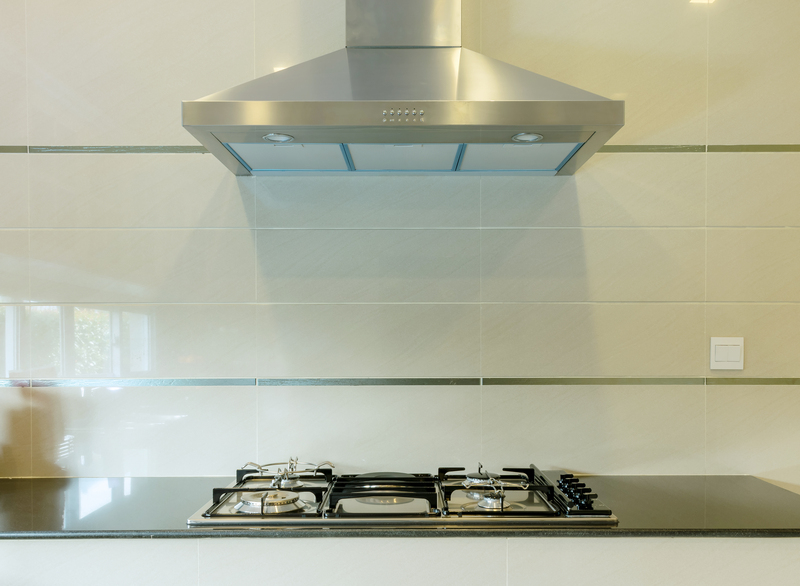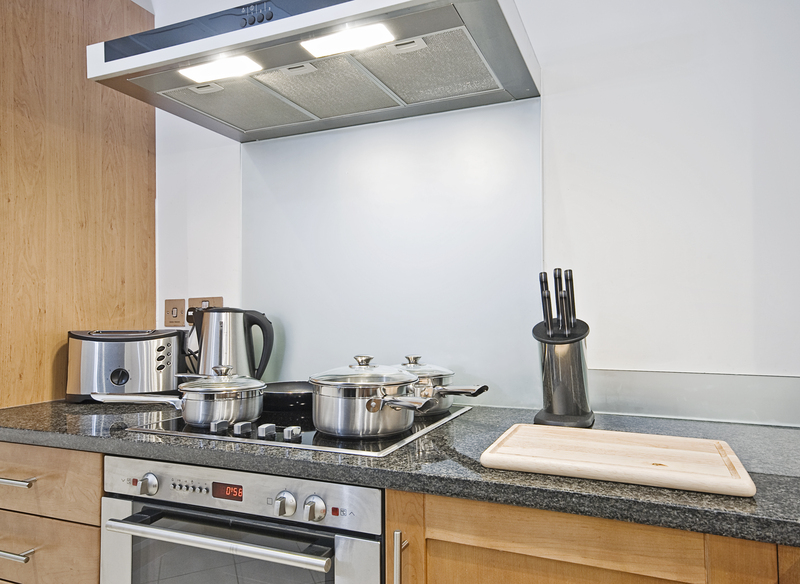Complete Guide to Cleaning Window Sill Mould
Posted on 30/05/2025
Complete Guide to Cleaning Window Sill Mould
Mould on window sills is a common problem for homeowners worldwide. Unsightly and potentially hazardous, window sill mould not only affects the beauty of your home but can pose health risks and lead to expensive repairs if left untreated. In this comprehensive guide, we will walk you through everything you need to know about identifying, removing, and preventing mould on window sills. Whether you're dealing with stubborn black mould or light mildew, this article provides expert advice for a cleaner, healthier home.
What is Window Sill Mould?
Before you can tackle the problem, it's important to understand what you're up against. Mould is a fungal growth that thrives in damp environments. When it finds a moist surface, such as a window sill, it can multiply quickly and spread. The most common collection spots are window sills because condensation can build up on glass and drip down.
Types of Mould Commonly Found on Window Sills
- Aspergillus: Typically grey or green and can trigger allergies.
- Cladosporium: Olive-green to brown and often found on wood surfaces.
- Stachybotrys chartarum (Black Mould): A toxic mould that appears black and slimy, requiring careful removal.
*It's essential to identify the type of mould accurately for safe and effective cleaning.*

Why Does Mould Grow on Window Sills?
*Moisture and organic material are the main ingredients for window sill mould.* Windows are particularly susceptible for several reasons:
- Condensation: Water droplets collect on the glass and drip onto sills.
- Poor Ventilation: Rooms with little air flow trap humidity around window areas.
- Leaky Windows: Damaged seals or uncaulked gaps let rainwater in.
Identifying the cause of your mould problem will help you eliminate it and prevent its return.
Risks Associated with Window Sill Mould
Mould is more than just an eyesore. Here are crucial reasons to remove it promptly:
- Health Risks: Mould spores can cause allergic reactions, asthma attacks, skin irritation, and other respiratory issues, especially in children and the elderly.
- Structural Damage: Over time, mould can corrode wooden window sills, weaken paint or varnish, and eventually cause rot.
- Reduced Property Value: Visible mould lowers the value of your home and may create issues during home inspections.
Removing window sill mildew and mould quickly keeps your home safe, fresh and welcoming.
Essential Supplies for Cleaning Window Sill Mould
Before starting your cleaning project, gather the right supplies. Here's a basic checklist:
- Protective gloves (rubber or latex)
- Face mask (to avoid inhaling spores)
- Goggles (optional, for extra safety)
- Spray bottle
- White vinegar or hydrogen peroxide (natural mould killers)
- Detergent or dish soap
- Baking soda (for scrubbing and deodorizing)
- Microfiber cloths (or disposable cleaning rags/paper towels)
- Soft-bristled brush (like a toothbrush for corners)
- Old toothbrush
- Bucket of warm water
- Bleach (optional, for stubborn mould or severe infestations - use with caution!)
Always wear protective gear when removing window mould, especially black mould, to minimize exposure to potentially toxic spores.
Step-by-Step Guide: How to Clean Mould from Window Sills
1. Preparation and Safety First
- Open windows to increase ventilation.
- Put on gloves, mask, and goggles before starting.
- Remove items (plants, decor, blinds) from the window area.
2. Dry the Area
- Use a paper towel or cloth to absorb excess moisture from the window sill.
- If the weather is dry, use a fan to help air the region out.
3. Apply Your Cleaning Solution
- For natural cleaning, fill a spray bottle with white vinegar, undiluted. Alternatively, use 3% hydrogen peroxide.
- Generously spray onto the mouldy areas.
- Let the solution sit for at least 60 minutes to break down the mould colonies.
4. Scrub the Mould
- Using a soft-bristled brush or old toothbrush, gently scrub the affected area.
- For black window sill mould, repeat spray and scrub until the stain fades.
- Add some baking soda to increase scrubbing power for stubborn spots.
5. Rinse and Wipe Clean
- Wipe the window sill with a clean, damp cloth or paper towels to remove residue.
- If needed, use a small amount of dishwashing detergent diluted in water to remove any greasy residues or odors.
6. Disinfect (Optional: Bleach Method)
- Caution: Bleach produces toxic fumes -- use only in well-ventilated areas and never mix with other cleaners.
- Mix 1 part bleach with 10 parts water.
- Apply with a clean cloth or sponge and let sit for 10 minutes.
- Wipe clean with a damp cloth.
7. Dry Thoroughly
- Use a dry cloth to absorb any remaining moisture.
- Leave the window open for a few hours, or place a fan nearby to ensure the area dries fully.
Tip: Dispose of all cleaning cloths/paper towels used, as they might contain active mould spores.
How to Remove Mould from Different Window Sill Materials
Did you know that the type of window sill you have affects the best cleaning approach?
Wooden Window Sills
- Do not over-saturate with water; wood is porous and can warp or rot.
- Avoid abrasive brushes. Instead, use a microfiber cloth with gentle scrubbing motion.
- If large areas are softened, flaking, or rotten, consult a professional for possible repairs.
UPVC or Vinyl Window Sills
- Can withstand a stronger scrubbing action.
- Safe to use hydrogen peroxide or bleach, but test a small area first to prevent discoloration.
Stone or Marble Sills
- Use mild detergent and avoid acidic solutions (like vinegar), which may etch the stone's surface.
Preventing Window Sill Mould in the Future
The best way to avoid repeated mould problems is to address the root causes. Here's how to keep your window sills mould-free over the long term:
1. Reduce Moisture
- Wipe condensation from windows and sills each morning during cold months.
- Use dehumidifiers in rooms that tend to be humid (like bathrooms and kitchens).
- Fix any leaks around the window frame immediately.
2. Improve Ventilation
- Open windows for at least 10 minutes daily to circulate fresh air.
- Install trickle vents or extractor fans in bathrooms and kitchens.
3. Regular Cleaning
- Dust and clean window sills weekly or biweekly.
- Quickly address any water spills or condensation buildup.
- Consider applying a mould-resistant sealant to wooden sills.
4. Control Indoor Humidity
- Maintain humidity levels between 30-50% for optimal comfort and mould prevention.
- Use an indoor hygrometer to monitor moisture levels.
Natural Alternatives for Window Sill Mould Removal
Some homeowners want to avoid harsh chemicals. Here are effective, eco-friendly options:
- White Vinegar: Naturally kills up to 82% of mould species. Leave on for 1 hour, scrub, and rinse.
- Baking Soda Paste: Mix with water to create a mild abrasive paste for tougher stains.
- Tea Tree Oil: Natural antifungal. Add 1 teaspoon per cup of water, spray and leave to air dry.
- Lemon Juice: Mild acid, good for light surface mildew. Combine with baking soda for added effect.
*Always test natural products on a small, hidden section first -- some surfaces may react unexpectedly!*
When to Call a Professional
While DIY cleaning is effective for minor to moderate infestations, there are times when professional help is necessary:
- Mould covers an area larger than 1 square meter (10 square feet).
- Stachybotrys chartarum (toxic black mould) is suspected.
- Mould is returning rapidly, despite regular cleaning and prevention measures.
- You notice a persistent musty odor that does not go away after cleaning.
- Wood, drywall, or window frames appear rotten or structurally damaged.
Professional mould remediation specialists have the expertise and equipment to tackle severe outbreaks safely and thoroughly.

Frequently Asked Questions about Cleaning Window Sill Mould
Can I use bleach on all types of window sills?
Bleach is safe for use on non-porous materials like UPVC, vinyl, or metal sills, but it can damage or discolor wooden and stone window sills. Natural cleaners like vinegar or hydrogen peroxide are safer choices for sensitive materials.
How often should I check my window sills for mould?
Inspect your window sills at least once a month (more often during damp seasons). Early detection makes cleaning easier and prevents the spread of mould.
Is window sill mould dangerous to pets?
Yes, pets are susceptible to mould-related health problems, too. Remove all pets from cleaning areas and dispose of contaminated cleaning materials immediately.
Will repainting my window sills stop mould growth?
Repainting can help if you use a mould-resistant primer and paint, but musty patches will reappear unless you address underlying moisture issues.
Conclusion: Achieve Spotless Window Sills
With the strategies in this Complete Guide to Cleaning Window Sill Mould, it's possible to restore freshness to your home and protect your family's health. Remember to address moisture sources, clean regularly, and choose the right supplies for your window sill's material. Tackling mould early is key to avoiding expensive repairs and persistent odours.
If you've struggled with removing window sill mould or have your own tips, feel free to share your insights below! A clean, safe, and beautiful home is just a few simple steps away.



